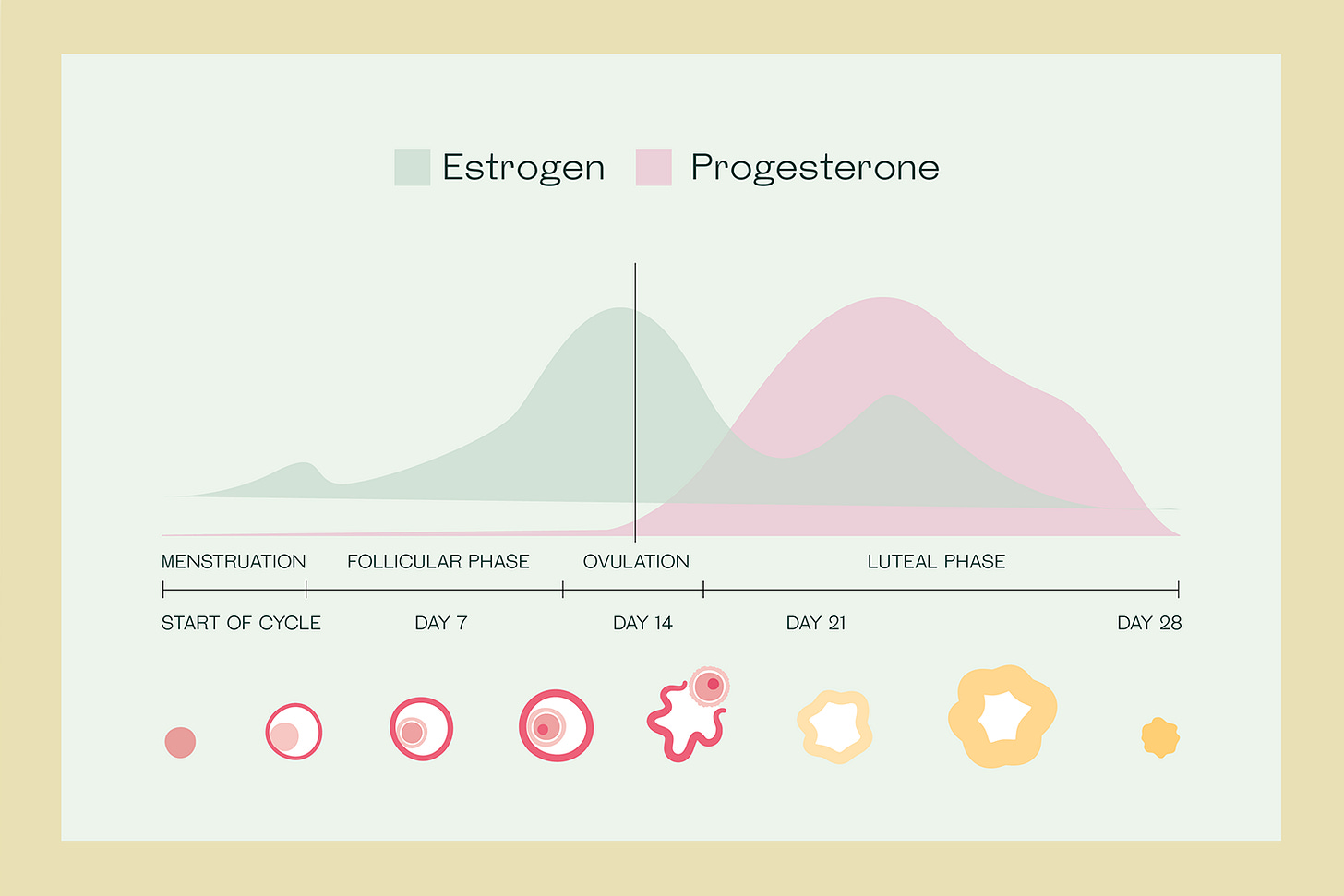
“How we are at the small scale is how we are at the large scale.”
-adrienne maree brown
As a Fertility Awareness Educator, I’m often thinking about how our cycles can tell us lessons about cyclical wisdom on the small and large scale.
As more and more clients come to me with symptoms of high estrogen (i.e., fibroids, heavy bleeding, etc.), estrogen and how we hold it culturally has been on my mind.
Estrogen: The Basics
Estrogen is really a superhero hormone!
What we call “estrogen” is actually three hormones:
E1: Estrone - a weaker form of estrogen
E2: Estradiol - the strongest form of estrogen that drives the first half of your cycle during your reproductive years
E3: Estriol - plays an important role in pregnancy
Estrogen has a range of functions in our bodies. It’s vital for glucose homeostasis, immune vitality, cardiovascular health, neural functions, fertility and so much more.
When I think about estrogen, I often think of growth. Estrogen stimulates cell growth and helps build up the lining of the endometrium during our cycle.
Now, while estrogen levels naturally change throughout your cycle (see the graphic above), we live in a world that may predispose many of us towards higher than normal estrogen levels.
If estrogen levels remain too high for too long, we may get that “growth” in an awkward or inefficient way (like a cyst or a fibroid instead of uterine lining), or it may contribute to conditions like autoimmune diseases and cancer.
Unfortunately, the number of estrogen-related conditions are escalating (i.e., PCOS, hormone-related cancers, infertility, etc.).
Xenoestrogens
Chemically speaking, estrogens - or rather, their copycat xenoestrogens - are common in our environment.
Xenoestrogens are endocrine-disrupting chemicals that mimic estrogen in the body and can disrupt estrogen receptor signaling.
These chemicals are linked to a range of adverse effects on human and animal health and can be found in cleaning supplies, food containers, cosmetics, pesticides, and more. They’ve even been found in menstrual pads.
Xenoestrogens can have huge effects on our cycles. These chemicals as weak estrogens, can disrupt the natural estrogen-to-progesterone ratio in the body and encourage extra growth of uterine tissue. In particular, phthalates and bisphenols (both xenoestrogens) are implicated in endometriosis and endometrial cancer.
One study in Krakow, Poland found that exposure to fossil fuel pollutants (including xenoestrogen air pollutants) was linked to a shorter luteal phases (the second half of the menstrual cycle, from ovulation to your bleed), which may be associated with an increase in reproductive cancers (see diagram above).
What’s more, endocrine disruptor exposure can have effects across generations. Lead (an inorganic xenoestrogen that can bind to estrogen receptors) is stored in bone, and given the increase in bone turnover during pregnancy, fetuses can experience high lead exposure if their parent was exposed.
The pervasiveness of endocrine-disrupting pollutants is just one aspect of how environmental justice and reproductive justice are inextricably linked.
An “estrogen dominant” culture
So not only do we have estrogen copycats around us, but I’d also argue that we live in a culture that prioritizes growth over all else: the generative process, beginning new work, moving onto the next thing.
You might call that a kind of “estrogen dominant” culture - or at the very least, one where the relationship to growth is skewed.
As a culture, we can grow and make things - but do we take care of them and sustain them well?
We can start countless new projects - but do we have the discernment to prune away what is unnecessary?
We can initiate and growth - but can we also rest?
In a world where burnout is on the rise globally, I am reflecting on how we might reprioritize on the micro and macro.
Our cycle as a fractal
So let’s return again to our fractal: the menstrual cycle.
Personally, as someone who exhibits symptoms of high estrogen during my cycle, I have found that working towards balance in my cycle has had a ripple effect on the rest of my life.
The more I work to balance out my estrogen physiologically, the more I am inviting in balance effort and rest in the rest of my life.
One of the gifts of tracking my cycle is that I can see these physical and emotional changes on my cycle charts.
The second half of my cycles (dominated by progesterone) have come more into balance with the first half (dominated by estrogen). I can see how my energy levels have shifted from frenetic burnout towards something more sustainable as well.
Cycle tracking allows me to understand how my day-to-day choices are affecting me on the micro and the macro.
Living with this day to day has also helped me organize my stance on environmental justice in a more embodied way.
I see over and over that my cycle is a fractal of our environment and cultural tendencies - but it is also a place where I can begin to tend those imbalances to create the world I want to see.
With gratitude,
Kate
—
P.S. Enrollment for my Cycle Charting Series closes on Sunday! If you’re looking to invite the lessons of cyclical wisdom into your life - the full spectrum of expansion, contraction, and rest - supporting balance in your cycle can be a part of that dialogue.
You’ll learn how to chart and interpret your cycle - and the course includes one individual session so you can feel confident in your own practice.
Use the discount code CYCLESTACK for 10% the class series!
To learn more, visit helloearthbody.com/class-series





